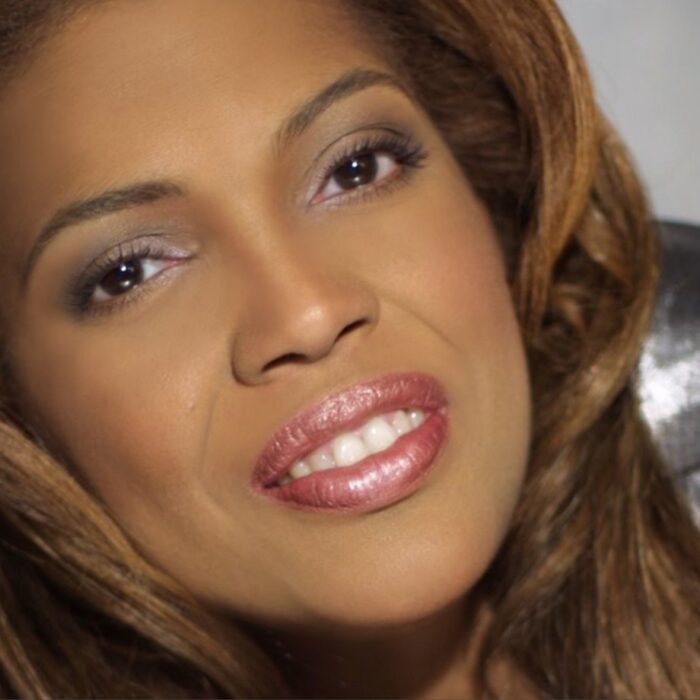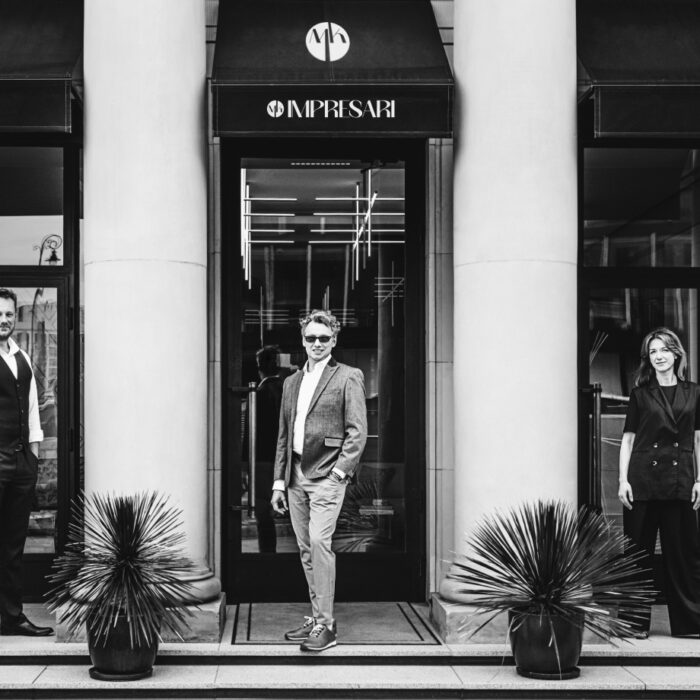
Q & A: Michał Sławecki on His Dresden and Munich Philharmonic Debut
By Francisco SalazarPolish countertenor Michał Sławecki has become known for his contemporary music interpretations and incorporates prominent Polish composers: Paweł Mykietyn, Agata Zubel, Wojciech Błażejczyk, Rafał Ryterski, Bartek Chajdecki, Maciej Zieliński, and Andrzej Zarycki amongst others.
He has performed with the National Philharmonic in Warsaw, Philharmonics in Szczecin, Gdańsk, and Bydgoszcz, the Silesian Opera in Bytom, the Polish National Opera, the Opera Nova in Bydgoszcz, the Castle Opera in Szczecin, the Manoel Theatre in Malta, and Theatre Maillon de Strasbourg.
His repertoire over the years has included music by Mozart, Handel, Gluck, and Monteverdi, among others.
Recently, Sławecki made his debut with the Dresden and Munich Philharmonic and spoke to OperaWire about the experience.
OperaWire: What does it feel like to make your Dresden and Munich Philharmonic debut? What do these orchestras mean to you?
Michał Sławecki: I am really happy to collaborate for the first time with these two legendary orchestras. Right before these concerts I had the big pleasure to sing also with the Berner Symphonieorchester, another great ensemble and historical institution. The Münchner Philharmoniker and the Dresden Philharmonie are probably two of the best orchestra in the world: their history is connected to personalities like Gustav Mahler, Sergiu Celibidache, James Levine, Christian Thielemann, Marek Janowski, Rafael Frühbeck de Burgos to name a few. The opportunity to work with these musicians is huge: it motivates you to give your best, to improve yourself to be at their high level. Being surrounded by their own sound is a unique experience. I am extremely grateful to Maestro Krzysztof Urbanski for the invitation to join him in this project. He is one of today’s leading conductors and to “make music” with him is really something special. Moreover, it is a privilege to experience Munich and Dresden, two cities rich with art and history. Unfortunately our work schedule doesn’t allow to have much time to properly visit the city, but I am extremely fascinated by the atmosphere in both cities.
OW: Tell me about – Symphony No. 3, “Symphony of Sorrowful Songs” – Henryk Mikołaj Górecki. What are the major challenges and how does it differ from other symphonic works?
MS: Górecki is one of the most important Polish composers of the late 20th century. His music was deeply influenced by Luigi Nono, Anton Webern and Karlheinz Stockhausen, but in the meantime he developed his own style. We can compare his style to the Structuralism of Pierre Boulez and the Minimalism of Arvo Pärt. Some musicologists defined the style of Górecki as “Sacred Minimalism,” for his focus on the sacred music. The Symphony No. 3 is probably his most famous and popular work. Structured in three movements, it has a complex contemplative mood in which the symbolism plays a really important role. It’s like a “Trittico” of images and sensations, suggested by poems of different origins. The first one is a Stabat Mater from a Polish poem of the 15th century; the second one is a prayer scrawled on a of a Gestapo prison in Zakopane; the third and last movement is based on a folk song in which a mother complains about the death of her son. The main challenge of this music is the attention to the text, both in the meaning of the words and in their “inner sound.” You have to feel the text and the music in your mind, your heart and your body. Performing this music is a deep experience. In his latest interviews, Górecki stated that he thinks music has always to have a meaning and a message. The artist must give his voice to deep feelings, unspeakable emotions and moral demands.
OW: How does his writing suit your voice? Tell me about the vocal style.
MS: In my career I approached many kinds of genres and styles, from Baroque, Mozart, the French Romanticism, even the Operetta to contemporary music and premieres. Górecki is different from all the other composers, although I have performed pieces by Polish authors of the same generation and “language,” like Karol Szymanowski or Krzysztof Penderecki. You have to embrace a “transcendent” style of singing, In which the vibrations resonate crystal clear, with a tone that is courtly but also emotionally involved.
OW: When you perform the same work with different ensembles in such a quick turnaround, how do you adjust to the orchestra?
MS: This is a really good question. It can be challenging, but not only because you perform with a different orchestra but also because you sing in different halls. The Salon Bernois, in which we performed with the Berner Symphonieorchester, is different from the Isarphilharmonie of the Münchner Philharmoniker or the Konzertsaal in the Kulturpalast of the Dresden Philharmonie and even the National Music Forum of Wrocław, where we will tour. These are bigger spaces (especially Munich), so you have to think how to make your voice be completely “heard” by everyone. It doesn’t mean you have to sing louder but you have to “express” yourself in a “bigger way.” I don’t know if I am explaining it in the right way. About singing the same piece with different orchestras is the same: you have to “tune” your voice to their own sound. It is an intimate sensation that is not possible to describe in words.
OW: After the Symphony, you perform Carmina Burana. How do you adjust in such a quick turnaround, especially with such differing vocal styles?
MS: I have already performed Carmina Burana in my career and I think it is easier than Górecki in terms of vocal style, although it is challenging for the range of the part and because it is a work basically structured on rhythm which origins are in the Medieval and Renaissance music. The other challenge is the huge orchestra intended by Orff, often without mercy of the soloists. I am really glad to be part of this new stage production at the Opera Baltycka in Gdańsk, under the baton of Yaroslav Shemet and with the choreography by Izabela Sokołowska-Boulton and Wojciech Warszawski. We started rehearsals before my concerts in Switzerland and Germany, and it will be a wonderful production I invite everyone to come to see!
OW: What is your favorite part of Carmina Burana?
MS: Obviously, the “aria” ‘Olim lacus colueram,’ with a Latin goliardic text about a Swan that has to be roasted. It is a great moment and an interesting, funny piece, because of the “seriousness” of the music, that seems almost a Gregorian singing, contrasting with the satire words.
OW: Do you prefer oratorios to performing opera? Or is it just different?
MS: I don’t distinguish so much opera from oratorios or concerts. I feel as a performative artist, so the difference is only the relationship with myself and the audience. In recitals you are expressing yourself in some way and there is a direct connection with the audience, while in symphonic concerts like these of Górecki you have to be an instrument of the composer and part of the whole. In opera there is a filter between you and the audience and it is the character you are playing. But I think that only if you “immerse” honestly yourself in the character, you can convey to the audience all its power and feelings. I love contemporary music and Baroque music in the same way. What I love the most is to mix these two things together: when I sing contemporary pieces I bring all my experience with the Baroque repertoire and I do the same doing Baroque, bringing my contemporary music baggage. This make things more interesting. In addition when I do concerts I am always interested in the way I “propose” myself to the audience, I want to be expressive with all my body and even with my outfit. I take this opportunity to thank Rad Duet, a Polish designer duo that created my suit for these symphonic concerts.
OW: What are some of your dream projects? What do you have planned for next season?
MS: My dream project is always to explore new things and expand my knowledge. I am excited by the creative process, so I am always looking for new ideas and new creations. I have two dream roles in operas, Orfeo (Gluck) and Oberon in Britten’s “A Midsummer’s Night’s Dream.” My voice is more extensive than the standard countertenors, so I can embrace many different roles. These two roles would be a completely different and challenging thing. And I love challenges! I think artists have to do things that are interesting primarily for themselves. Routine is not a good friend for an artist. When you feel it you have to change your mind and take the next opportunity to do something new!


